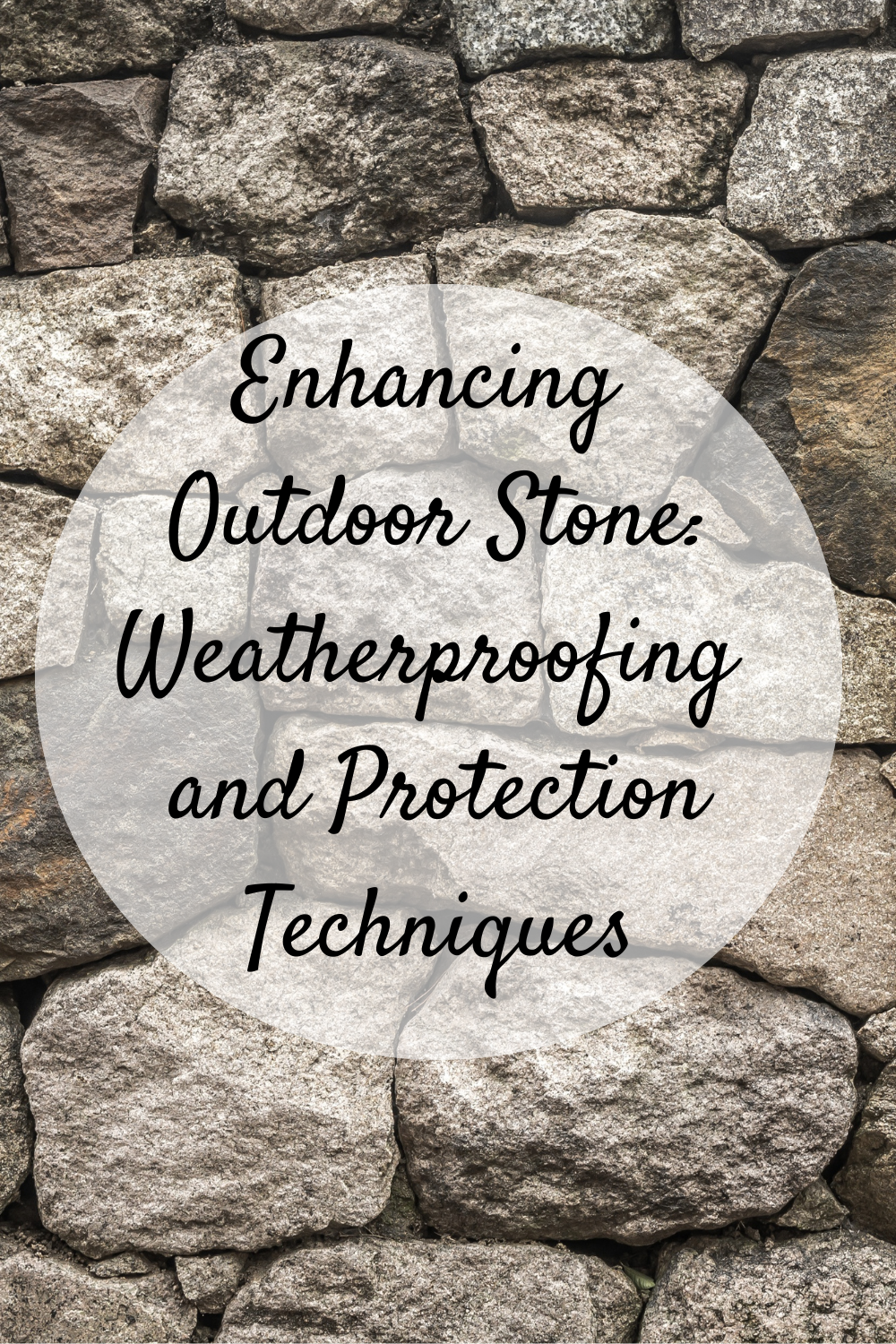
Outdoor stone structures can add elegance and durability to landscapes. However, exposure to weather conditions can take a toll on them over time.
Proper weatherproofing and protection techniques are essential to maintain the beauty and structural integrity of stone surfaces.
In this article, we’ll explore three crucial aspects of stone care including sealing, cleaning, and repair methods.
How Can Sealing Enhance the Longevity of Your Stone?
Sealing is one of the most effective ways to protect outdoor stone surfaces. An invisible barrier created by sealants prevents water and moisture penetration.
Water is infamous for its destructive capabilities – think of it as the “silent eroder.” Over time, water can weaken the stone, making it brittle and more susceptible to cracks.
There are various types of sealants available, each suitable for different kinds of stones.
- Penetrating sealants seep into the stone’s pores, offering deep-rooted protection without changing the surface’s appearance.
- Topical sealants sit on the surface and can enhance the color of the stone while providing a protective layer against stains and minor abrasions.
Applying Sealants: A Step-by-Step Guide
Step 1: Before applying any sealant, ensure that the stone surface is clean.
Step 2: Select a penetrating or topical sealant based on your stone type.
Step 3: Use a brush or roller to ensure even coverage.
Step 4: Allow the sealant to dry completely. Always follow manufacturer instructions.
Depending on exposure levels, stones might need sealing every few years.
What Are the Best Practices for Cleaning Outdoor Stone?
Without regular cleaning, outdoor stones can accumulate dirt, moss, and other organic material that could cause staining or slippery surfaces. Regular maintenance ensures longevity.
Choosing the Right Cleaning Solution
Natural cleaners like a mild dish soap mixed with water work well for routine cleaning. For tougher stains, specialized stone cleaners are recommended.
Always avoid acidic substances like vinegar or lemon juice, particularly on calcareous stones such as limestone and marble.
Step-by-Step Stone Cleaning Process
Step 1: Sweep to remove loose dirt and debris first.
Step 2: Use a garden hose for rinsing.
Step 3: Gently scrub using a soft-bristle brush with your chosen cleaning solution to avoid scratching the stone.
Step 4: Rinse thoroughly to remove all soap residue.
Sandstone retaining walls Sydney experts, for instance, take this cleaning step seriously due to consistent exposure to harsh weather.
Professionals or DIY-ers in other regions with similar climates should also follow these steps to ensure the longevity and appearance of their stone structures.
How Do You Fix Cracks and Chips on Stones?
Cracks and chips are inevitable over time. Whether caused by natural wear or accidental impacts, addressing these damages early prevents further deterioration.
Identifying the Type of Damage
Small hairline cracks may be superficial, but larger cracks can signify deeper issues requiring professional evaluation.
Quick Solutions for Minor Damages
- Filling Cracks: Use a clear epoxy or stone filler that matches your stone color.
- Sanding: Lightly sand the filled area until smooth.
- Sealing: Apply sealant over repaired sections for extra protection.
Professional Help for Major Repairs
For extensive damage, such as large cracks or broken sections, consulting a professional stonemason ensures structural integrity and safety.
By following these techniques – sealing, cleaning, and timely repairs – you can significantly enhance your outdoor stone surfaces’ durability and charm.
FAQs
Can I Seal My Stone Surface Right After Installation?
No, it’s important to wait until the mortar has fully cured before applying any sealant. This typically takes around 30 days but could vary depending on environmental conditions and the materials used.
What Type of Brush Should I Use for Cleaning Stone?
A soft-bristle brush is ideal for cleaning as it won’t scratch or damage the stone surface but will effectively remove dirt and grime.
How Often Should I Reapply Sealant?
Reapplication frequencies depend on factors such as the type of stone and level of exposure to elements. Generally, reapply every 1-3 years for optimum results.
Can I Use Pressure Washers on Stone Surfaces?
Yes, but caution is advised. Using too high pressure can damage stones. A controlled setting or a fan tip attachment is preferable.





Leave a Reply